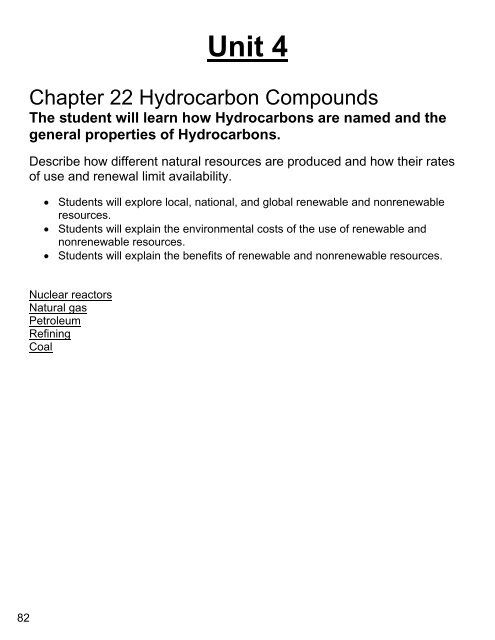You also want an ePaper? Increase the reach of your titles
YUMPU automatically turns print PDFs into web optimized ePapers that Google loves.
Bent: They look, well, bent. Bond angles can be either 116 degrees for molecules with one lone pair<br />
or 104.5 degrees for molecules with two lone pairs.<br />
Linear: The atoms in the molecule are in a straight line. This can be either because there are only<br />
two atoms in the molecule (in which case there is no bond angle, as there need to be three atoms to<br />
get a bond angle) or because the three atoms are lined up in a straight line (corresponding to a 180<br />
degree bond angle).<br />
There are other types, but we won't worry about them until college or AP <strong>Chemistry</strong>.<br />
Using a flow chart to figure out what shape, and bond angle an atom has<br />
Take a look at this flow chart. I'll explain how to use it to find all the stuff above at the end.<br />
Complicated, huh? Here's how to use it:<br />
1. Draw the Lewis structure for the molecule. This vital if you're going to get the answer right.<br />
2. Count the number of "things" on the atom you're interested in. Let's say that you're looking at<br />
methane, CH4. If you want to find the bond angles, shape, and hybridization for carbon, count<br />
the number of things that are stuck to it.<br />
Now, the vague term "things" refers to atoms and lone pairs. IT DOES NOT REFER TO THE<br />
NUMBER OF BONDS! When you look at methane, there are four atoms stuck to it, so you'd go down<br />
the line that says "four" toward the green boxes on this chart.<br />
People get confused with multiple bonds. Take carbon dioxide, for example. There are four bonds<br />
(carbon is double-bonded to each oxygen) but only two oxygen atoms bonded to carbon. In this<br />
79




